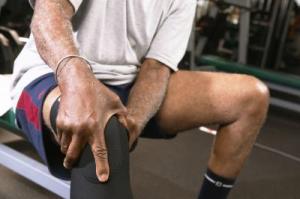Chondromalacia Patellae: Causes, Symptoms and Treatment
Chondromalacia Patellae, also known as ‘runner’s knee’ is the most common cause of chronic knee pain. It often affects the young athletics, but may also happen to-older people with arthritis and females as well, as they have less muscle mass than males.
What do we mean by Chondromalacia Patellae?
Chondromalacia Patellae is a condition, where the cartilage under your patella or knee cap softens and wears away or deteriorates. Poor alignment or overuse of knee cap or patella wears down the cartilage and as a result, knee cap begins to rub against the thigh bone which further leads to grinding sensations and chronic pain in the front of the knee.
What are factors leading to Chondromalacia Patellae?
When you bend your knee; the backside of your knee cap slides over the femur (thigh bone). But when the knee cap does not move properly it begins to rub with the thigh bone leading to swelling and pain. Many factors including the following lead to the improper movement of knee cap which ultimately results in Chondromalacia Patellae:
- Weak hamstrings and quadriceps (back and front thigh muscles)
- Imbalance between the adductors and abductors (the muscles on the outside and inside of your thigh)
- Improper tracking of knee cap
- Trauma to knee cap like; Dislocation or Fracture
- Repetitive stress on knee joint due to activities like; running, jumping, twisting, skiing and playing soccer
- Over-weight
- Knock-knees or Flat foot
- Unusual or improper shaped patella under surface
- Arthritis
What are the signs and symptoms associated with Chondromalacia Patellae?
- Chondromalacia Patellae generally leads to a vague discomfort in the front of the knee, generally known as patellofemoral pain. This pain worsens with the activities like; sitting, bending, standing for longer periods and exercising
- Feeling of tightness in the knee area
- Reduction in thigh muscle mass
- Minor swelling in the knee area
- Loss of thigh muscle strength
- Grinding or cracking sensation when knee is extended
- Pain increases with kneeling down and squatting
- You may feel trouble moving your knee joint past a certain point
What are the treatment options available to treat Chondromalacia Patellae?
Non-surgical treatment techniques are generally adopted to treat Chondromalacia Patellae. The most effective treatment technique is to adhere to a well-organised Physical Therapy treatment program. A Physical Therapy treatment program comprises of a complete rehabilitation program improving your muscle function and flexibility while relieving you from pain and swelling. Following treatment techniques are adopted under a complete Physical Therapy Rehabilitation Program:
Initially for the management of pain and swelling, physical therapists may recommend:
- Resting your knee
- Avoiding activities that irritate your knee cap
- Icing your knee
- Knee braces or arch supports to protect your knee joint and to improve the alignment as well
- Special shoes inserts and support devices (orthotics) for flat feet
Once the pain and swelling subsides below mentioned treatment techniques are employed by the Physical Therapists to help the patients to regain pain-free functioning and activity:
- Selective strengthening exercises are recommended to strengthen the inner portion of thigh muscles
- Stationary bicycling, pool running or swimming are advised to maintain cardiovascular conditioning
- Isometric exercises involving the tightening and releasing of muscles are recommended to maintain muscle mass
- Taping of knee is recommended to reduce pain and as well to enhance the exercising ability
- Specific exercises to correct the misalignment and muscle imbalance are recommended
Contact Alliance Physical Therapy
Contact Alliance Physical Therapy for the efficient and state-of-art treatment and quick relieve from any of your musculoskeletal pains. Our compassionate physical therapists make use of minimum invasive diagnostic and treatment techniques to save you from further pain and suffering and assist you to lead an active and healthy life.
